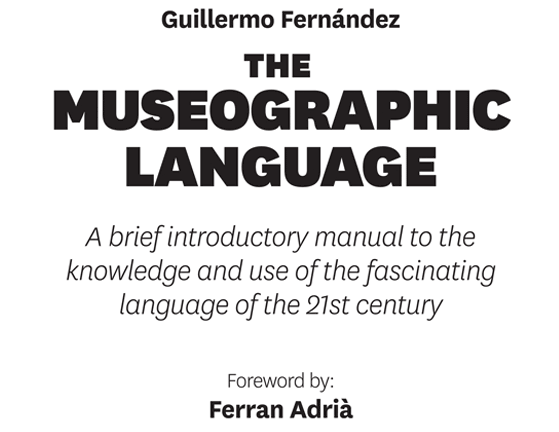This text argues that there is a language called the museographic language. It is a language that, like any other, has its own characteristics and communicative resources, which make it unique and necessary, thus differentiating it from other languages.
A message —of any kind: facts, ideas, sensations, feelings, thoughts, emotions, concepts…— can be expressed through different languages in order to be communicated. It is possible to read a book about a particular issue, and also watch a movie about it. In both cases we will obtain a different and complementary communicative experience, so that the necessity of the literary language will be fully justified in the first case, and the necessity of the cinematographic language in the second case, both acting autonomously and independently. Each of these languages also has its own native communicational product: in this example the book and the movie, respectively. It would be also possible to apply these languages to an infiity of purposes, so that it would be possible to write a book —or to make a movie— with a lucrative intention, or with the purpose of contributing to transform certain social behaviors.1.
In the same way, it would also be possible to use the museographic language for the same message of the previous example. In this case, the communication product would be the exhibition, and this will have to offer something that a movie or a book can not. This allows for a complementary and enriching approach about the message that you want to convey.
Analogously to the movie being the native product of the cinematographic language, the exhibition is the native product of the museographic language.
Several aspects are frequently mentioned as characteristic of the museum experience. For example, the importance of having a narrative capacity, so that the exhibition can tell stories. It is also said that there must be an emotional and affective base substantiated on different aesthetic assets that produce fascination, so that the message is effiently transmitted in the context of an exhibition; or that it is important to tackle a broad creative process to make a good exhibition. It is even claimed that the exhibition should aspire to generate a stimulus for the search of knowledge, rather than to communicate data.
In my 2019 book The Transformative Science Museum, I discussed this, arguing that everything mentioned in the previous paragraph are not exclusive characteristics of the museum experience, but are aspects of any language that pretends to communicate effectively. For example: an effective exhibition appeals to affective and emotional aspects on the visitor, and its effiency will also depend on the level of the visitors’ prior knowledge, but that is true, too, in the case of the musical language, in the case of the performing arts or, simply, in the class of a good teacher. In short: everything that is said of the museum experience and that would actually be valid for all languages, shows that the museographic language is effectively another fully autonomous language, independent as any other.
The contemporary museum could be understood as a means of communication that uses the museographic language for an educational purpose.
The diagram above shows the museum´s native language understood as one more fully fledged language, available for any message to be communicated.
Next: How the museographic language communicates.
Previous: Why have I written this manual.

